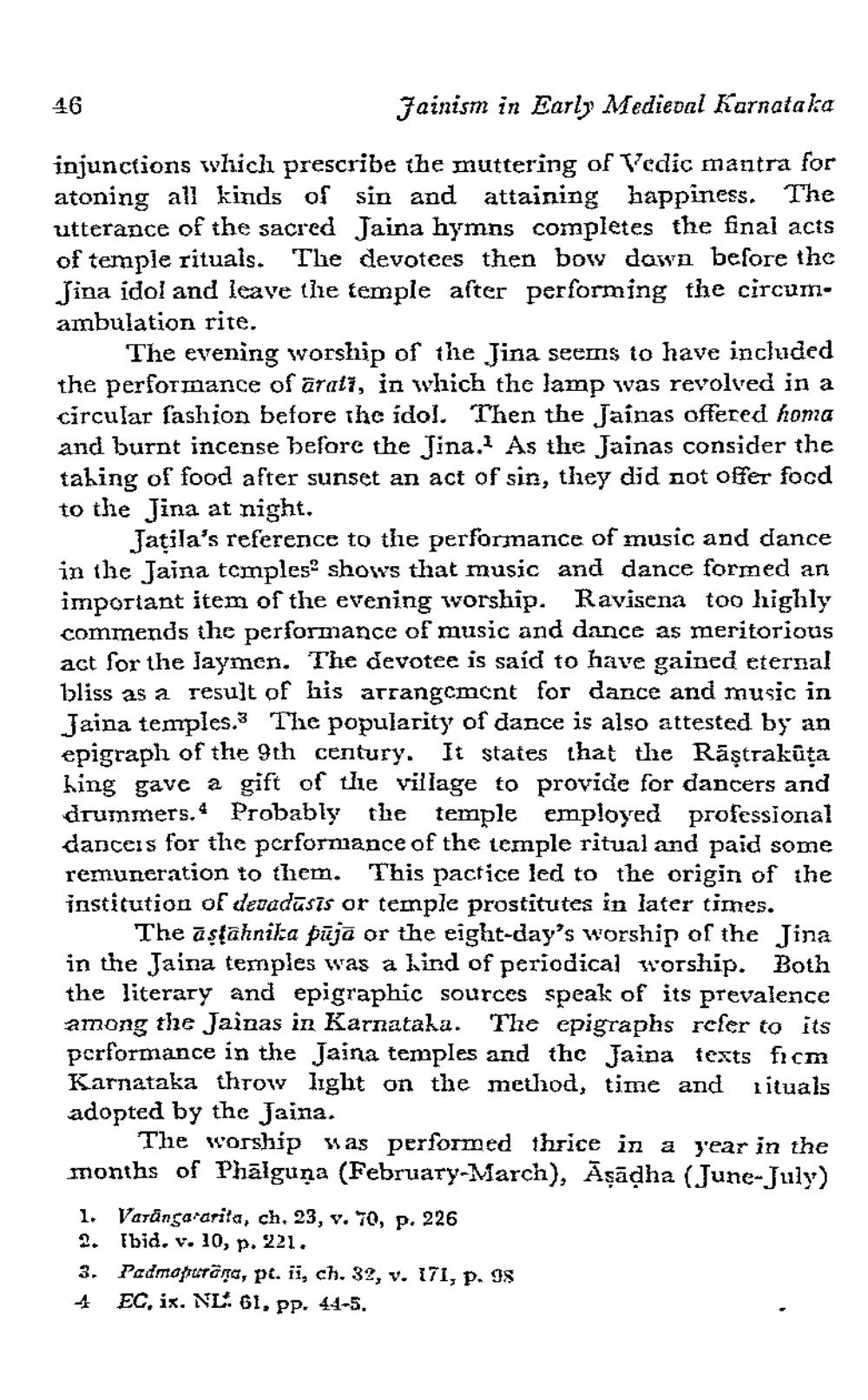________________
46
Jainism in Early Medieval Karnataka
injunctions which prescribe the muttering of Vedic mantra for atoning all kinds of sin and attaining happiness. The utterance of the sacred Jaina hymns completes the final acts of temple rituals. The devotees then bow dawn before the Jina idol and leave the temple after performing the circumambulation rite.
The evening worship of the Jina seems to have included the performance of arali, in which the lamp was revolved in a circular fashion before the idol. Then the Jainas offered homa and burnt incense before the Jina. As the Jainas consider the taking of food after sunset an act of sin, they did not offer focd to the Jina at night.
Jațila's reference to the performance of music and dance in the Jaina temples shows that music and dance formed an important item of the evening worship. Ravisena too highly commends the performance of music and dance as meritorious act for the laymen. The devotee is said to have gained eternal bliss as a result of his arrangement for dance and music in Jaina temples. The popularity of dance is also attested by an epigraph of the 9th century. It states that the Rāştrakūta hing gave a gift of the village to provide for dancers and drummers. Probably the temple employed professional danceis for the performance of the temple ritual and paid some remuneration to them. This pactice led to the origin of the institution of devadusis or temple prostitutes in later times.
The astahnika pūja or the eight-day's worship of the Jina in the Jaina temples was a kind of periodical worship. Both the literary and epigraphic sources speak of its prevalence among the Jainas in Karnataka. The epigraphs rcfer to its performance in the Jaina temples and the Jaina texts ficm Karnataka throw light on the method, time and rituals adopted by the Jaina.
The worship was performed thrice in a year in the months of Phālguņa (February March), Aşādha (June-July) 1. Varângaarita, ch. 23, v. 70, p. 226 2. Ibid, v. 10, p. 221. 3. Padmapurona, pt. ii, ch. 32, v. 171, p. 98 4 EC, is. NL: 61, pp. 44-5.




